Exploring the World of Filters and Effects in Image Editing
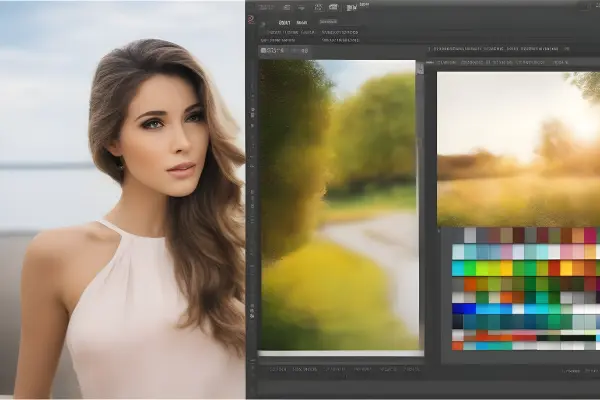
1. Introduction
A. What Are Filters and Effects?
Filters and effects in image editing refer to a set of digital tools. You can use them on photos and other visual media to change their appearance. These techniques can change many parts of an image. They include color, contrast, sharpness, and more. They aim to make the image look artistic or appealing.
B. Why Filters and Effects Matter in Image Editing
Filters and effects play a crucial role in modern image editing, as they allow photographers, graphic designers, and artists to transform ordinary images into stunning and eye-catching works of art. They provide a means to correct imperfections, enhance visual appeal, and convey specific moods or messages through visual storytelling.
C. How Filters and Effects Make Images Better
Filters and effects can significantly impact the final outcome of an image. They enable professionals and hobbyists to make precise adjustments to brightness, saturation, and texture, leading to better color balance and composition. These tools are indispensable for enhancing the overall quality of images, making them more engaging and compelling for various purposes, from social media to professional publications.
Diving into Different Types: Image, Artistic, Special Effects, and Creative Filters
2.What are the different Types of Filters
A. Image Filters
Color Correction Filters
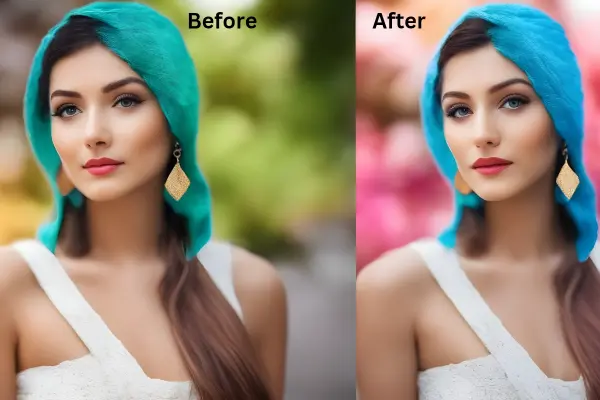
Color correction filters are used to fix color issues in photos. For example, if a picture looks too warm or too cool, you can adjust the color balance to make it look more natural.
They’re also handy for making colors more vibrant and true to life, especially in cases where lighting conditions may have affected the image’s colors. What is image masking
Noise Reduction Filters
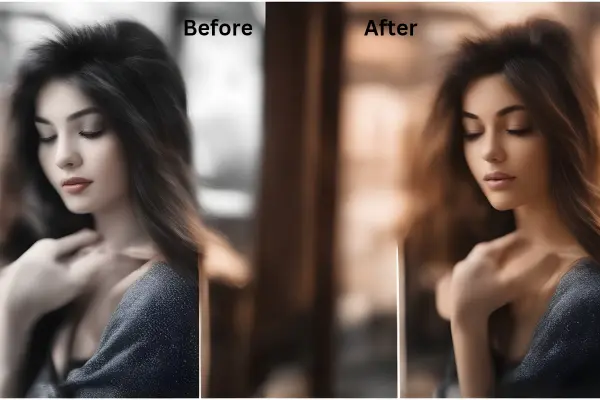
Noise reduction filters are particularly useful in low-light photography where images may have grainy or speckled artifacts.
They work by smoothing out these imperfections, resulting in cleaner and more visually appealing pictures.
Sharpening Filters
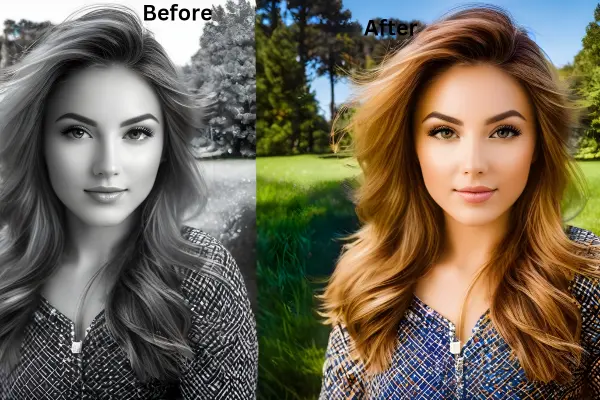
Sharpening filters enhance the clarity and fine details in photos. They’re commonly used in portrait and landscape photography to make subjects or objects stand out.
These filters emphasize the edges and lines in an image, making it appear more defined and crisp
Blurring Filters
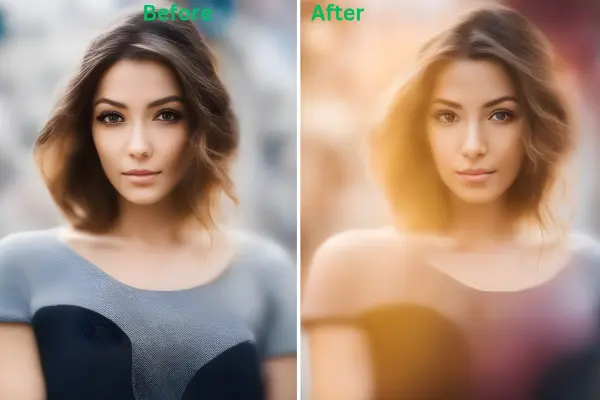
Blurring filters, also known as “soft focus” filters, soften parts of an image. This is often used for creating a dreamy or romantic atmosphere in photos.
They can also help reduce distractions by blurring the background, bringing the main subject into focus.
Distortion Filters
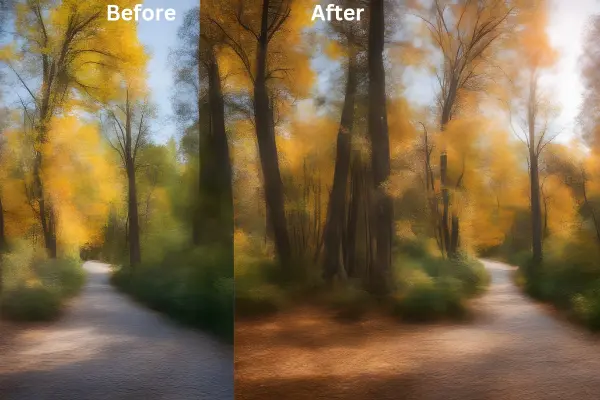
Distortion filters allow for creative image manipulation. They can warp, twist, or stretch parts of an image to achieve artistic or whimsical effects.
These filters are frequently used for unique and imaginative visual storytelling.
B. Artistic Filters
Sketch and Painting Effects
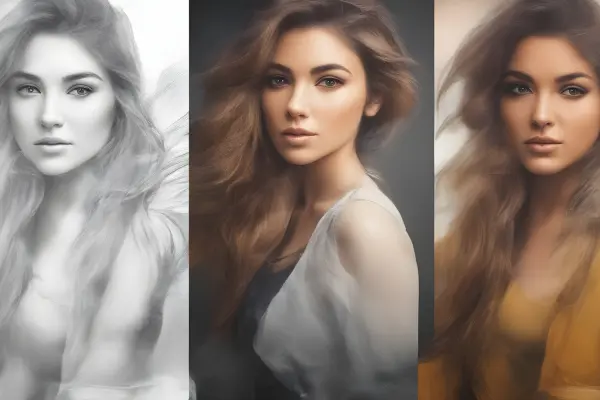
Artistic filters transform photos into sketches or paintings, giving them an artistic, hand-drawn appearance.
This effect is popular for creating stylized and unique images, especially in art and design projects.
Watercolor and Oil Painting Filters
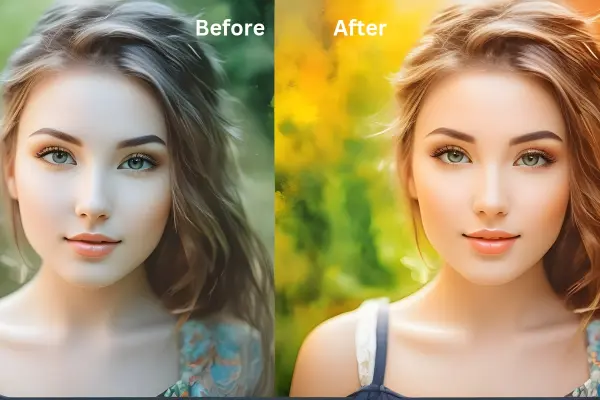
Watercolor and oil painting filters emulate the textures and brushwork of traditional painting styles.
They turn photos into digital artwork, making them resemble watercolor or oil paintings.
Stylization Filters
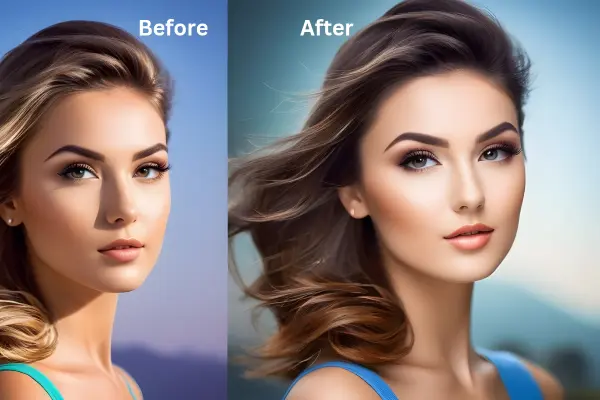
Stylization filters offer a variety of artistic styles and effects. They enable you to apply different artistic techniques or materials to your images.
These filters provide a broad range of creative possibilities for expressing your visual ideas.
C. Special Effects Filters
Lens Flare
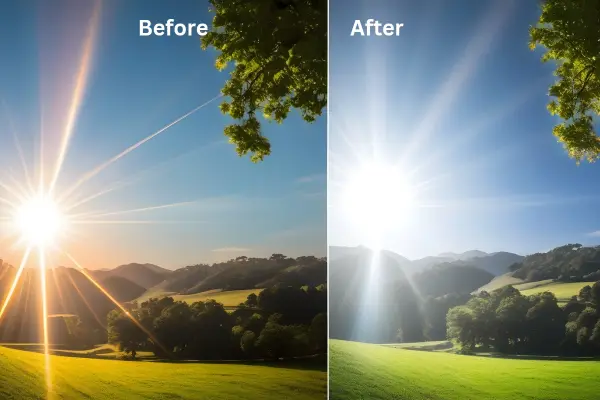
Lens flare filters replicate the natural effect of light scattering within a camera lens, often creating a warm, radiant glow or dynamic streaks of light.
They are used to add drama, intrigue, or a sense of atmosphere to photos.
Gradients and Textures
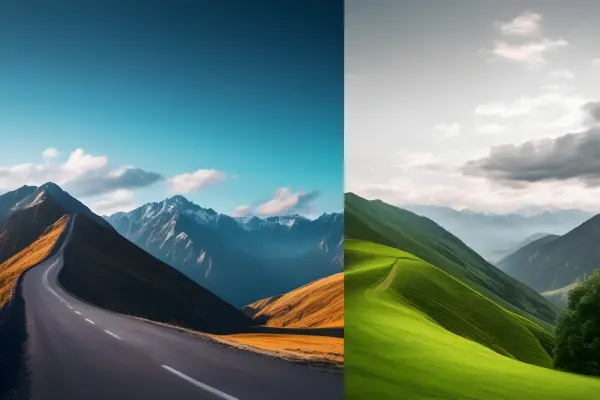
Gradients and texture filters introduce gradients and textures to images, allowing you to create visually interesting backgrounds or add depth to photos.
These filters can give your images a unique character and style.
Lighting and Glow Effects
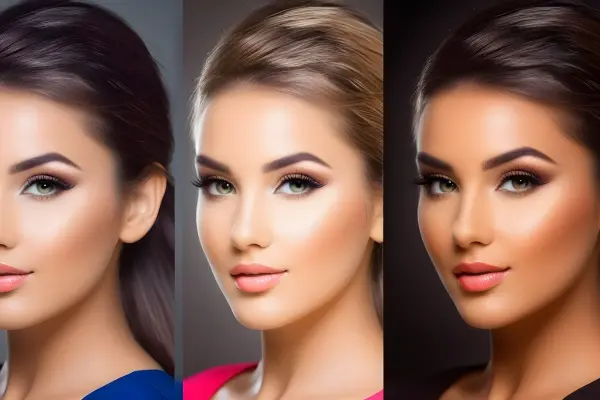
Lighting and glow effects filters help you enhance the lighting in your photos. They can add highlights, glows, and other lighting enhancements.
These effects make specific elements in your images stand out and create a captivating atmosphere.
D. Creative Filters
Mosaic and Pixelation Effects
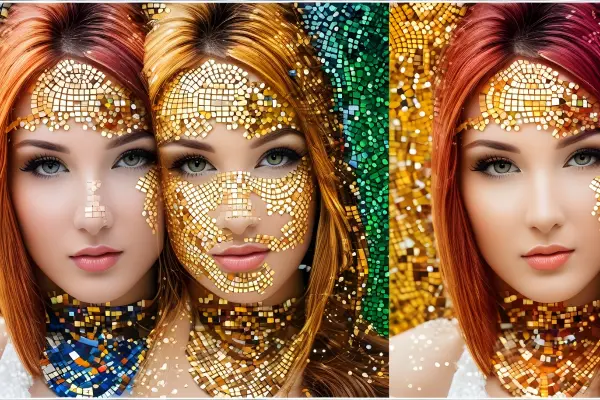
Creative filters like mosaics and pixelation can obscure parts of an image deliberately. This is often done to protect privacy or create a distinctive visual style.
Pixelation can also be used for a playful or abstract effect.
Duotone and Gradient Mapping
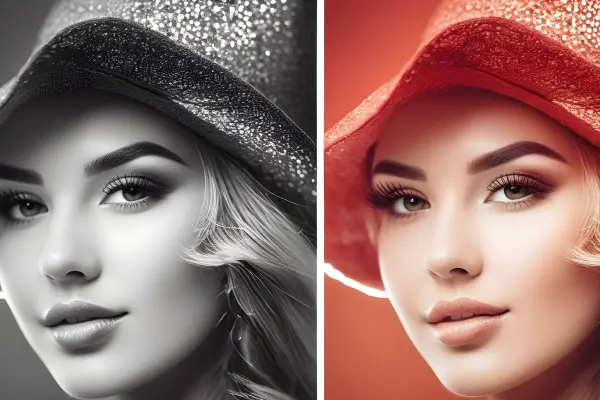
Duotone and gradient mapping filters alter the colors in your images, creating striking two-tone or gradient effects.
They are employed for both artistic and design purposes, giving photos a unique and visually appealing look.
These various types of filters offer a wide array of options for image editing, catering to different needs, styles, and creative goals.
Demystifying How Filters Work: Algorithms, Real-time Processing, and Non-destructive Techniques
3. How Filters Work
A. Application of Filters to Modify Images
When you apply filters to modify images, it’s like using a set of digital tools to enhance, adjust, or transform your photos. These tools can change the colors, clarity, and overall appearance.
Think of it as giving your photos a makeover. You can make them look more vibrant, sharper, or even turn them into something completely different, like a vintage photograph or a painting.
B. Algorithms and Processing Techniques
Filters rely on sophisticated computer algorithms and processing techniques. These algorithms are like step-by-step instructions that tell the computer how to adjust your images.
It’s similar to a chef following a recipe to cook a delicious meal. In this case, the “recipe” tells the computer how to enhance the colors, apply artistic effects, or correct imperfections in your photos. These algorithms make the filter’s magic happen.
C. Real-time and Non-destructive Filtering
Some filters work in real-time, which means you can see the changes as you apply them to your images. It’s like trying on different outfits and immediately seeing how they look on you.
Filters can also be non-destructive, which is like having a safety net for your photos. When you use a non-destructive filter, it doesn’t permanently change your original image. You can always go back to the original photo, just like having a backup outfit in your closet.
Filters are like a digital toolbox that enables you to transform and enhance your photos. They do this by following precise digital recipes (algorithms) and let you experiment with different looks, all while keeping your original image safe and sound.
Effects in Image Editing: From Nostalgic Sepia to Immersive 3D
4. Effects in Image Editing
A. Overview of Effects
Effects in image editing are like the seasoning in cooking; they add flavor and uniqueness to your photos. These digital techniques and tools enable you to enhance, transform, or style your images, making them more visually striking and engaging.
Whether you want to evoke a sense of nostalgia, drama, or depth, effects are the creative ingredients that elevate your photos from mundane to extraordinary. They turn a simple image into a visual story that captures attention and emotions.
B. Common Image Effects
Sepia and Vintage Effects
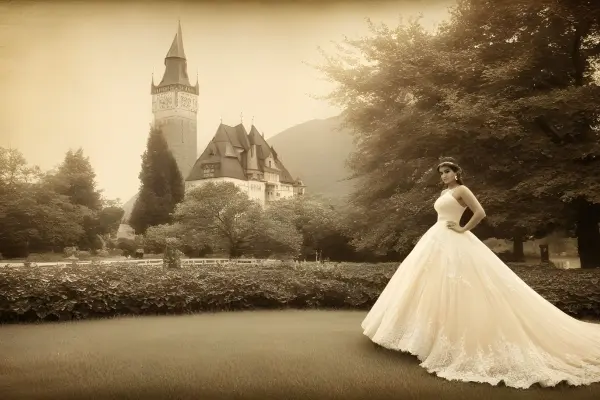
Sepia and vintage effects are reminiscent of old photographs, introducing warmth and nostalgia. They transport your images to a different era, imbuing them with a timeless and sentimental quality.
These effects are cherished for their ability to create a connection between the past and the present, making them ideal for evoking emotions and memories.
Black and White Conversion
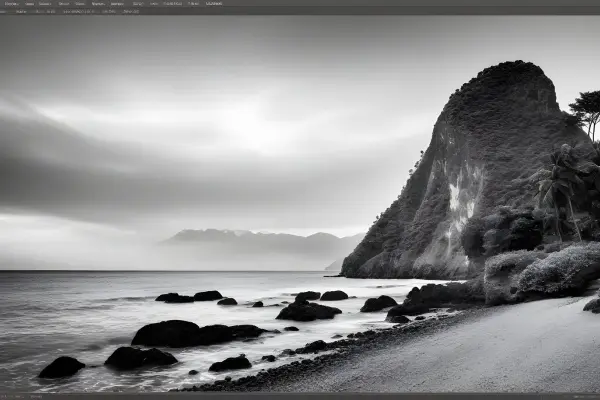
Black and white conversion simplifies images by removing color, emphasizing shapes, textures, and contrasts. This classic effect offers an elegant, timeless, and minimalist approach to photography.
It allows you to focus on the essence of a scene, conveying emotions and stories in a way that color sometimes can’t.
HDR Effects

HDR (High Dynamic Range) effects enhance the details in photos, especially in challenging lighting conditions. They breathe life into images by expanding the range of brightness, resulting in vivid and lifelike visuals.
These effects help photos shine, capturing the full spectrum of colors and details in scenes with a wide contrast between light and shadow.
C. Advanced Effects
3D Effects
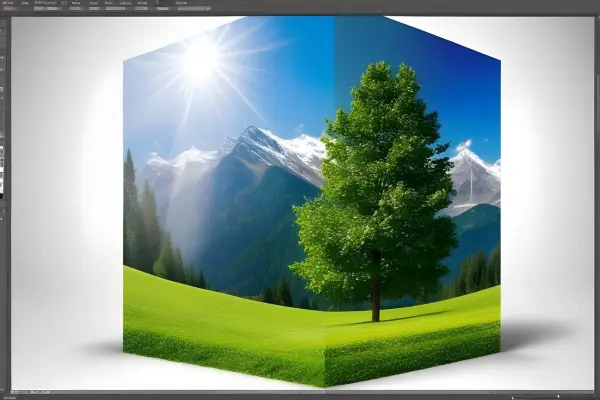
3D effects create an illusion of depth in photos, making them appear three-dimensional. They add a sense of realism or fantasy by simulating how we perceive the world with our eyes.
These effects are powerful for creating eye-catching visuals, whether in advertising, gaming, or artistic projects, and they transform photos into immersive experiences.
Lens Distortion and Perspective Correction
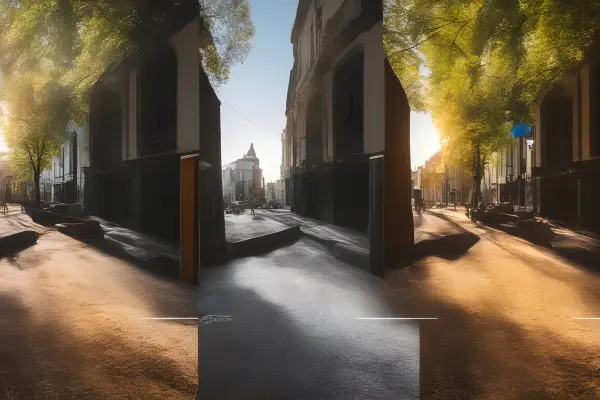
Lens distortion and perspective correction effects grant you control over the shape and angle of your images. They help correct optical distortions and provide a creative way to manipulate visual elements.
These effects can be used for architectural photography to correct converging lines or to add an artistic twist to your compositions, making your images visually engaging and architecturally precise.
Motion Effects

Motion effects convey a sense of action and movement in still photos. They capture the essence of a moment by adding dynamic elements, creating images that feel alive and captivating.
These effects are commonly used in sports, wildlife, and journalistic photography to emphasize the energy and drama of a scene, making photos more immersive and exciting.
These effects are like the artist’s brushstrokes on a canvas, offering an array of choices to express your creativity and emotions. They elevate your images from mere visual records to compelling narratives, making image editing a potent medium for visual storytelling and expression.
Practical Usage Scenarios: Photography, Artistic Creations, and Specialized Applications
5. Usage Scenarios
A. Enhancing Photography:
Filters in image editing software serve to adjust elements like brightness, contrast, and color saturation, elevating the quality of photographs.
Techniques such as sharpening and noise reduction fall under this category, refining details and creating visually striking images.
B. Creating Artistic and Creative Images:
Beyond traditional enhancements, artistic filters offer a playground for creativity. This includes effects like oil painting, watercolor, or surreal distortions, allowing for unique visual storytelling.
Artistic filters often blur the line between photography and digital art, enabling users to produce visually captivating and emotionally evocative images.
C. Specialized Applications (e.g., medical imaging):
Filters play a vital role in medical imaging by enhancing specific features for diagnostic purposes. For instance, contrast adjustments can highlight anomalies in X-rays or MRIs, aiding medical professionals in accurate diagnoses.
This underscores the diverse applications of image filters, extending beyond the realm of artistic expression to contribute to critical fields like healthcare.
Unveiling Tools and Software: Industry Standards, Open-source Alternatives, and Mobile Apps
6. Tools And Software.
A. Leading Image Editing Software:
Industry-standard software such as Adobe Photoshop offers an extensive array of filters, catering to both basic enhancements and intricate creative processes.
These tools provide professional photographers and graphic designers with a comprehensive suite of options, ensuring versatile and high-quality editing capabilities.
B. Open-source and Free Software:
Open-source alternatives like GIMP empower users with powerful editing tools without the financial barrier. This fosters a community-driven approach to image editing, with collaborative development and accessibility at its core.
The availability of free software democratizes image editing, making it accessible to a broader audience and promoting innovation within the open-source community.
C. Mobile Apps for Filters and Effects:
The rise of mobile photography has led to the development of user-friendly apps with built-in filters, offering quick and convenient ways to enhance and share images.
Mobile apps cater to a diverse user base, from casual photographers to social media enthusiasts, bringing professional-level editing tools to the palm of the user’s hand.
Customization and Fine-tuning: Tailoring Filters to Your Creative Vision
7. Customization and Fine-tuning
A. Adjusting Filter and Effect Parameters:
Users have the flexibility to fine-tune each filter’s parameters, tailoring the effect to suit their preferences and the specific requirements of the image.
This level of customization allows for precision in achieving the desired visual impact while maintaining control over the subtleties of the editing process.
B. Layering and Combining Filters:
Advanced users often employ layering techniques, combining multiple filters to create intricate effects. This approach enhances the depth and complexity of the final image, pushing the boundaries of creative expression.
Layering opens up a realm of possibilities, enabling users to experiment with blending modes and opacity levels for truly unique and personalized results.
C. Creating Custom Filters and Effects:
Some advanced software permits users to create custom filters from scratch. This empowers users to define their visual language, fostering a sense of individuality in their editing style.
The ability to craft custom filters expands the creative toolkit, allowing users to break away from predefined options and explore uncharted territories in image manipulation.
Considerations in Choosing Filters: Image Context, Artistic Goals, and Target Audience
8. Considerations in Choosing Filters and Effects
A. Image Context and Purpose:
Selecting filters requires a nuanced understanding of the image’s context and purpose. For example, subtle enhancements may be suitable for professional portraits, while bold and vibrant filters might be fitting for creative or social media-oriented content.
The alignment of filters with the intended message ensures that the visual elements complement and enhance the overall narrative of the image.
B. Aesthetic and Artistic Goals:
Aesthetic considerations play a pivotal role in filter selection. Whether aiming for a vintage look, high-key lighting, or futuristic aesthetics, understanding the artistic goals informs the choice of filters.
Users can leverage filters as a means of storytelling, using visual elements to evoke specific emotions or convey a particular atmosphere within the image.
C. Target Audience and Medium:
Filters should cater to the preferences of the target audience and the medium of presentation. What works well for social media might differ from what is suitable for a professional portfolio or a print publication.
Considering the medium ensures that the edited images are optimized for the platform, delivering the intended impact to the audience.
Learning from Examples: Before and After Edits, Case Studies of Notable Image Edits
9. Examples and Case Studies
A. Before and After Examples:
Visual representations of image edits provide a side-by-side comparison, showcasing the transformative power of filters and effects.
Before-and-after examples serve as practical guides, illustrating the specific enhancements made and offering inspiration for users looking to achieve similar results.
B. Case Studies of Notable Image Edits:
In-depth case studies delve into specific instances where filters played a pivotal role in achieving remarkable results.
Analyzing these cases provides insights into the thought processes and techniques employed by professionals, offering valuable lessons for users looking to elevate their own editing skills.
Navigating Challenges: Overuse, Compatibility, and Ethical Considerations
10. Challenges and Limitations
A. Overuse and Artifacts:
Overusing filters can lead to visual artifacts and a loss of authenticity. Striking a balance between enhancements and preserving the natural elements of an image is crucial.
Users must exercise restraint to prevent over-editing, ensuring that filters enhance rather than detract from the visual integrity of the photograph.
B. Compatibility and Rendering Issues:
Different image editing software may interpret filters differently, leading to compatibility issues when sharing edited images across platforms.
Users should be aware of potential discrepancies and take steps to mitigate these issues, such as using universally supported file formats or checking previews across multiple platforms.
C. Ethical Considerations (e.g., Misleading Edits).
The transformative nature of filters raises ethical considerations, particularly in contexts like journalism or documentary photography.
Users should be mindful of the potential for misleading edits and adhere to ethical standards, ensuring that the edited image remains a faithful representation of the original content.
Future Trends in Image Editing: Advancements, AI Integration, and Evolving Creative Possibilities
11. Future Trends
A. Advancements in Filter and Effect Technology:
Ongoing technological advancements are likely to bring more sophisticated filters, utilizing cutting-edge algorithms for enhanced and automated editing.
This may include real-time processing capabilities, allowing users to preview and apply complex filters with unprecedented speed and accuracy.
B. Integration with AI and Machine Learning:
The integration of AI and machine learning is set to revolutionize image editing by providing intelligent suggestions and automating repetitive tasks.
AI-driven enhancements could analyze user preferences, suggesting filters and adjustments tailored to individual styles and preferences.
C. Evolving Creative Possibilities:
As technology evolves, creative possibilities in image editing will continue to expand. New tools and features may emerge, pushing the boundaries of traditional editing and unlocking novel ways to express visual ideas.
Users can anticipate an ever-growing palette of creative options, encouraging experimentation and innovation in the pursuit of visually compelling imagery.
Final Words.
A. Recap of the Significance of Filters and Effects:
Summarizing the overarching impact of filters on image editing, from basic enhancements to the facilitation of artistic expression and specialized applications.
Highlighting the role of filters in transforming images, making them more visually appealing, and providing a means of creative expression.
Frequently Asked Questions.
What are the different types of filters and effects used in image editing software?
Image filters, artistic filters, special effects filters, and creative filters are the four main types of filters used in image editing software.
How do filters work in image editing software?
Filters work by applying a set of algorithms to modify the pixels of an image. These algorithms can be used to adjust color, brightness, contrast, sharpness, and other image properties.
What are the different scenarios where filters and effects can be used to enhance images?
Filters and effects can be used to enhance images in various scenarios such as enhancing photography, creating artistic and creative images, and specialized applications like medical imaging.
What are the leading image editing software available in the market?
Adobe Photoshop, Adobe Lightroom, and Affinity Photo are some of the leading image editing software available in the market.
How can filters and effects be customized and fine-tuned to achieve desired results?
Filters and effects can be customized and fine-tuned by adjusting filter and effect parameters, layering and combining filters, and creating custom filters and effects.
What are the considerations one should keep in mind while choosing filters and effects for their images?
Some of the considerations one should keep in mind while choosing filters and effects for their images include image context and purpose, aesthetic and artistic goals, and target audience and medium.
Can you provide examples of before and after images that have been edited using filters and effects?
Yes, before and after images that have been edited using filters and effects can be found online on various websites and social media platforms.
What are some of the challenges and limitations of using filters and effects in image editing software?
Some of the challenges and limitations of using filters and effects in image editing software include overuse and artifacts, compatibility and rendering issues, and ethical considerations like misleading edits.
What are some of the future trends in filter and effect technology?
Advancements in filter and effect technology include the use of artificial intelligence and machine learning algorithms to automate the image editing process and improve the quality of the output.
What are some examples of creative filters?
Here are some examples of creative filters that can be used in image editing software:
Sketch and Painting Effects: These filters can be used to convert an image into a sketch or painting. They can be used to create artistic and creative images.
Watercolor and Oil Painting Filters: These filters can be used to create watercolor and oil painting effects in an image. They can be used to add a unique touch to an image.
Stylization Filters: These filters can be used to stylize an image by applying various effects such as posterization, halftone, and mosaic. They can be used to create unique and creative images.
Mosaic and Pixelation Effects: These filters can be used to create mosaic and pixelation effects in an image. They can be used to create unique and creative images.
